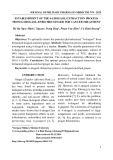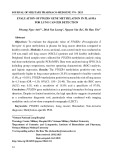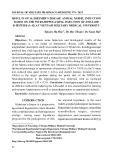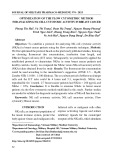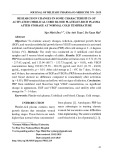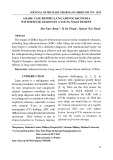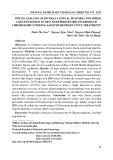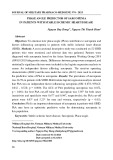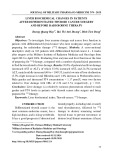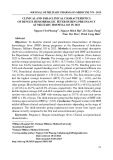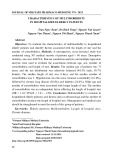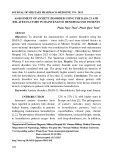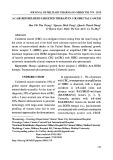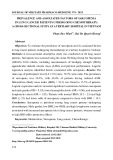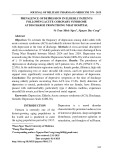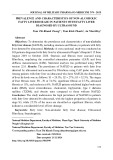
JOURNAL OF MILITARY PHARMACO-MEDICINE N04 - 2025
239
OUTCOMES OF LONG-STEM CEMENTLESS HEMIARTHROPLASTY
FOR UNSTABLE INTERTROCHANTERIC FEMORAL FRACTURES
IN GERIATRIC PATIENTS: A TWO-YEAR FOLLOW-UP STUDY
Pham Ngoc Thang1, Nguyen Quoc Cuong1
Nguyen Thanh Thao2, Vu Anh Dung1,2*
Abstract
Objectives: To assess the clinical outcomes of primary long-stem cementless
bipolar hip arthroplasty as a treatment option for unstable intertrochanteric femoral
fractures in geriatric patients. Methods: A retrospective study was conducted on
67 elderly patients aged > 70 years old with unstable intertrochanteric femoral
fractures. Clinical outcomes were assessed based on the duration of walking
without support, length of hospital stay, mortality rate, Harris Hip scores (HHS),
and postoperative complications. Results: The mean age of patients was 84.34 ±
6.67. Fracture types included 43 cases of A2.2, 19 cases of A2.3, and 5 cases of
A3.1. The mean follow-up duration was 27.89 ± 10.24 months. The mean duration
of hospitalization was 15.37 ± 5.09 days. Median HHS at the last follow-up was
81.61 ± 7.06. Postoperative complications were four cases of pulmonary infection
and one case of postoperative dislocation. During follow-up, the postoperative
mortality rate was 5.97%. Conclusions: Primary cementless bipolar
hemiarthroplasty is a secure and effective choice for the treatment of
intertrochanteric femoral fracture in the elderly.
Keywords: Hemiarthroplasty; Geriatric patient; Intertrochanteric fracture;
Cementless bipolar; Long-stem.
1Military Hospital 103, Vietnam Military Medical University
2Kanazawa Medical University Hospital
*Corresponding author: Vu Anh Dung (surgeonvuanhdung@gmail.com)
Date received: 20/01/2025
Date accepted: 05/3/2025
http://doi.org/10.56535/jmpm.v50i4.1194





